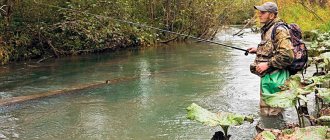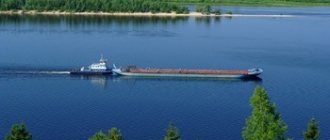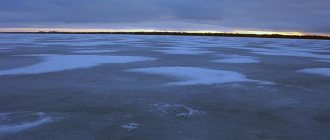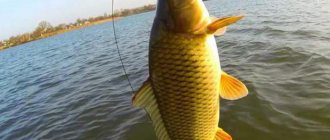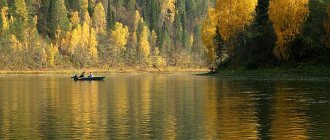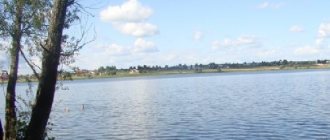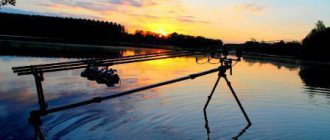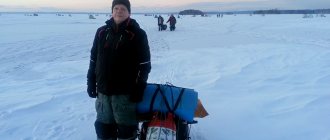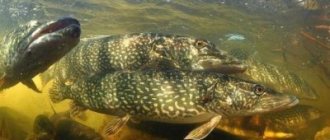deutschenglishespañolfrançaisहिन्दी
Fishing forecast > Russia > Rostov region > Oryol district > Manych
Find out how the fish will bite near the village at Manych station in the coming days. The bite forecast takes into account the weather, moon phase, water temperature, and seasonal fish activity.
Village at Manych station on the map:
Expand the map
to zoom with the mouse wheel
Move this checkbox
| February 16 Tuesday | February 17 Wednesday | February 18 Thursday | February 19 Friday | February 20 Saturday | ||||||||||||||||
| time | night 02:00 | morning 08:00 | day 14:00 | evening 20:00 | night 02:00 | morning 08:00 | day 14:00 | evening 20:00 | night 02:00 | morning 08:00 | day 14:00 | evening 20:00 | night 02:00 | morning 08:00 | day 14:00 | evening 20:00 | night 02:00 | morning 08:00 | day 14:00 | evening 20:00 |
| Weather show weather hide weather | heavy snowfall | heavy snowfall | heavy snowfall | heavy snowfall | snowfall | Cloudy | Cloudy | Mainly cloudy | Partly cloudy | Mainly cloudy | Partly cloudy | Partly cloudy | Partly cloudy | Mainly cloudy | Partly cloudy | Partly cloudy | Partly cloudy | Mainly cloudy | Partly cloudy | Mainly cloudy |
| air temperature, °C °F feels like, °C °F | −6 21° | −6 21° | −5 23° | −6 21° | −7 19° | −7 19° | −5 23° | −6 21° | −7 19° | −8 18° | −5 23° | −6 21° | −8 18° | −8 18° | −4 25° | −5 23° | −6 21° | −6 21° | −2 28° | −3 27° |
| −8 18° | −11 12° | −11 12° | −13 9° | −14 7° | −14 7° | −11 12° | −10 14° | −10 14° | −9 16° | −9 16° | −11 12° | −13 9° | −14 7° | −8 18° | −8 18° | −7 19° | −9 16° | −7 19° | −7 19° | |
| water temperature, °C °F surface / depth | 1 34° / 2 36° | 1 34° / 2 36° | 1 34° / 2 36° | 1 34° / 2 36° | 1 34° / 2 36° | 1 34° / 2 36° | 1 34° / 2 36° | 1 34° / 2 36° | 1 34° / 2 36° | 1 34° / 2 36° | 1 34° / 2 36° | 1 34° / 2 36° | 1 34° / 2 36° | 1 34° / 2 36° | 1 34° / 2 36° | 1 34° / 2 36° | 1 34° / 2 36° | 1 34° / 2 36° | 1 34° / 2 36° | 1 34° / 2 36° |
| cloudiness, % | 100 | 100 | 100 | 100 | 100 | 80 | 90 | 100 | 70 | 100 | 6 | 47 | 50 | 85 | 74 | 23 | 12 | 100 | 79 | 67 |
| precipitation, mmin/6 h | 0.3 0.012 | 0.8 0.031 | 0.5 0.02 | 0.7 0.028 | 0.1 0.004 | 0 0 | 0 0 | 0 0 | 0 0 | 0 0 | 0 0 | 0 0 | 0 0 | 0 0 | 0 0 | 0 0 | 0 0 | 0 0 | 0 0 | 0 0 |
| wind | SE southeast | E-N-E east-northeast | E-N-E east-northeast | E-N-E east-northeast | E-N-E east-northeast | E-N-E east-northeast | NE northeast | NE northeast | NE northeast | SE southeast | South South | SSE-E south-southeast | SE southeast | SE southeast | E-S-E east-southeast | SSE-E south-southeast | SW southwest | W-N-W west-northwest | W-N-W west-northwest | W-N-W west-northwest |
| wind speed, m/s km/h mph / wind gusts, m/s km/h mph | 1 / 2 4 / 7 2 / 4 wind speed 1 m/s km/h mph, gusts up to 2 m/s km/h mph wind speed 4 m/s km/h mph, gusts up to 7 m/s km/h mph wind speed 2 m/s km/h mph, gusts up to 4 m/s km/h mph Water bodies are calm. | 3 / 4 11 / 14 7 / 9 wind speed 3 m/s km/h mph, gusts up to 4 m/s km/h mph wind speed 11 m/s km/h mph, gusts up to 14 m/s km/h mph wind speed 7 m/s km/h mph, gusts up to 9 m/s km/h mph Slight water disturbance. | 5 / 6 18 / 22 11 / 13 wind speed 5 m/s km/h mph, gusts up to 6 m/s km/h mph wind speed 18 m/s km/h mph, gusts up to 22 m/s km/h mph wind speed 11 m/s km/h mph, gusts up to 13 m/s km/h mph The waters are moderately rough. | 5 / 8 18 / 29 11 / 18 wind speed 5 m/s km/h mph, gusts up to 8 m/s km/h mph wind speed 18 m/s km/h mph, gusts up to 29 m/s km/h mph wind speed 11 m/s km/h mph, gusts up to 18 m/s km/h mph The waters are moderately rough. | 5 / 7 18 / 25 11 / 16 wind speed 5 m/s km/h mph, gusts up to 7 m/s km/h mph wind speed 18 m/s km/h mph, gusts up to 25 m/s km/h mph wind speed 11 m/s km/h mph, gusts up to 16 m/s km/h mph The waters are moderately rough. | 4 / 6 14 / 22 9 / 13 wind speed 4 m/s km/h mph, gusts up to 6 m/s km/h mph wind speed 14 m/s km/h mph, gusts up to 22 m/s km/h mph wind speed 9 m/s km/h mph, gusts up to 13 m/s km/h mph The waters are moderately rough. | 4 / 5 14 / 18 9 / 11 wind speed 4 m/s km/h mph, gusts up to 5 m/s km/h mph wind speed 14 m/s km/h mph, gusts up to 18 m/s km/h mph wind speed 9 m/s km/h mph, gusts up to 11 m/s km/h mph The waters are moderately rough. | 3 / 4 11 / 14 7 / 9 wind speed 3 m/s km/h mph, gusts up to 4 m/s km/h mph wind speed 11 m/s km/h mph, gusts up to 14 m/s km/h mph wind speed 7 m/s km/h mph, gusts up to 9 m/s km/h mph Slight water disturbance. | 1 / 2 4 / 7 2 / 4 wind speed 1 m/s km/h mph, gusts up to 2 m/s km/h mph wind speed 4 m/s km/h mph, gusts up to 7 m/s km/h mph wind speed 2 m/s km/h mph, gusts up to 4 m/s km/h mph Water bodies are calm. | 1 / 2 4 / 7 2 / 4 wind speed 1 m/s km/h mph, gusts up to 2 m/s km/h mph wind speed 4 m/s km/h mph, gusts up to 7 m/s km/h mph wind speed 2 m/s km/h mph, gusts up to 4 m/s km/h mph Water bodies are calm. | 2 / 3 7 / 11 4 / 7 wind speed 2 m/s km/h mph, gusts up to 3 m/s km/h mph wind speed 7 m/s km/h mph, gusts up to 11 m/s km/h mph wind speed 4 m/s km/h mph, gusts up to 7 m/s km/h mph Slight water disturbance. | 3 / 4 11 / 14 7 / 9 wind speed 3 m/s km/h mph, gusts up to 4 m/s km/h mph wind speed 11 m/s km/h mph, gusts up to 14 m/s km/h mph wind speed 7 m/s km/h mph, gusts up to 9 m/s km/h mph Slight water disturbance. | 3 / 4 11 / 14 7 / 9 wind speed 3 m/s km/h mph, gusts up to 4 m/s km/h mph wind speed 11 m/s km/h mph, gusts up to 14 m/s km/h mph wind speed 7 m/s km/h mph, gusts up to 9 m/s km/h mph Slight water disturbance. | 3 / 5 11 / 18 7 / 11 wind speed 3 m/s km/h mph, gusts up to 5 m/s km/h mph wind speed 11 m/s km/h mph, gusts up to 18 m/s km/h mph wind speed 7 m/s km/h mph, gusts up to 11 m/s km/h mph Slight water disturbance. | 3 / 4 11 / 14 7 / 9 wind speed 3 m/s km/h mph, gusts up to 4 m/s km/h mph wind speed 11 m/s km/h mph, gusts up to 14 m/s km/h mph wind speed 7 m/s km/h mph, gusts up to 9 m/s km/h mph Slight water disturbance. | 2 / 3 7 / 11 4 / 7 wind speed 2 m/s km/h mph, gusts up to 3 m/s km/h mph wind speed 7 m/s km/h mph, gusts up to 11 m/s km/h mph wind speed 4 m/s km/h mph, gusts up to 7 m/s km/h mph Slight water disturbance. | 1 / 2 4 / 7 2 / 4 wind speed 1 m/s km/h mph, gusts up to 2 m/s km/h mph wind speed 4 m/s km/h mph, gusts up to 7 m/s km/h mph wind speed 2 m/s km/h mph, gusts up to 4 m/s km/h mph Water bodies are calm. | 2 / 4 7 / 14 4 / 9 wind speed 2 m/s km/h mph, gusts up to 4 m/s km/h mph wind speed 7 m/s km/h mph, gusts up to 14 m/s km/h mph wind speed 4 m/s km/h mph, gusts up to 9 m/s km/h mph Slight water disturbance. | 4 / 5 14 / 18 9 / 11 wind speed 4 m/s km/h mph, gusts up to 5 m/s km/h mph wind speed 14 m/s km/h mph, gusts up to 18 m/s km/h mph wind speed 9 m/s km/h mph, gusts up to 11 m/s km/h mph The waters are moderately rough. | 3 / 5 11 / 18 7 / 11 wind speed 3 m/s km/h mph, gusts up to 5 m/s km/h mph wind speed 11 m/s km/h mph, gusts up to 18 m/s km/h mph wind speed 7 m/s km/h mph, gusts up to 11 m/s km/h mph Slight water disturbance. |
| pressure mm. Hg Art. inch Hg Art. hPa | 762 30 1016 | 761 29.96 1015 | 760 29.92 1013 | 760 29.92 1013 | 760 29.92 1013 | 760 29.92 1013 | 758 29.84 1011 | 757 29.8 1009 | 758 29.84 1011 | 758 29.84 1011 | 758 29.84 1011 | 759 29.88 1012 | 759 29.88 1012 | 760 29.92 1013 | 762 30 1016 | 763 30.04 1017 | 765 30.12 1020 | 766 30.16 1021 | 766 30.16 1021 | 766 30.16 1021 |
| humidity, % | 75 | 87 | 81 | 89 | 84 | 67 | 49 | 50 | 55 | 57 | 49 | 65 | 78 | 78 | 65 | 77 | 83 | 73 | 46 | 50 |
| Moon phase | Young Moon age: 5 days illumination: 17% distance: 403 thousand km. | Young Moon age: 5 days illumination: 25% distance: 405 thousand km. | First quarter age: 6 days illumination: 33% distance: 405 thousand km. | First quarter age: 7 days illumination: 43% distance: 405 thousand km. | First quarter age: 8 days illumination: 52% distance: 404 thousand km. | |||||||||||||||
| moonrise—moonset | 09:28—22:31 | 09:47—23:36 | 10:07—03:00 | 10:30—00:39 | 10:58—01:44 | |||||||||||||||
| sunrise—sunset | 07:12—17:37 | 07:11—17:38 | 07:09—17:40 | 07:07—17:41 | 07:06—17:43 | |||||||||||||||
| length of day | 10:25 | 10:27 | 10:31 | 10:34 | 10:37 | |||||||||||||||
| hours of sunshine per day | 5.1 | 5.1 | 10 | 8.4 | 8.4 | |||||||||||||||
| UV index | 1 minor UV radiation | 1 minor UV radiation | 1 minor UV radiation | 1 minor UV radiation | 1 minor UV radiation | |||||||||||||||
| fish bite 0-100% | ||||||||||||||||||||
| White amur | 0 Grass carp are not biting Grass carp are found in deep places | 0 Grass carp are not biting Grass carp are found in deep places | 0 Grass carp are not biting Grass carp are found in deep places | 0 Grass carp are not biting Grass carp are found in deep places | 0 Grass carp are not biting Grass carp are found in deep places | 0 Grass carp are not biting Grass carp are found in deep places | 0 Grass carp are not biting Grass carp are found in deep places | 0 Grass carp are not biting Grass carp are found in deep places | 0 Grass carp are not biting Grass carp are found in deep places | 0 Grass carp are not biting Grass carp are found in deep places | 0 Grass carp are not biting Grass carp are found in deep places | 0 Grass carp are not biting Grass carp are found in deep places | 0 Grass carp are not biting Grass carp are found in deep places | 0 Grass carp are not biting Grass carp are found in deep places | 0 Grass carp are not biting Grass carp are found in deep places | 0 Grass carp are not biting Grass carp are found in deep places | 0 Grass carp are not biting Grass carp are found in deep places | 0 Grass carp are not biting Grass carp are found in deep places | 0 Grass carp are not biting Grass carp are found in deep places | 0 Grass carp are not biting Grass carp are found in deep places |
| Loach | 0 No loach biting Loach is found in deep places | 0 No loach biting Loach is found in deep places | 0 No loach biting Loach is found in deep places | 0 No loach biting Loach is found in deep places | 0 No loach biting Loach is found in deep places | 0 No loach biting Loach is found in deep places | 0 No loach biting Loach is found in deep places | 0 No loach biting Loach is found in deep places | 0 No loach biting Loach is found in deep places | 0 No loach biting Loach is found in deep places | 0 No loach biting Loach is found in deep places | 0 No loach biting Loach is found in deep places | 0 No loach biting Loach is found in deep places | 0 No loach biting Loach is found in deep places | 0 No loach biting Loach is found in deep places | 0 No loach biting Loach is found in deep places | 0 No loach biting Loach is found in deep places | 0 No loach biting Loach is found in deep places | 0 No loach biting Loach is found in deep places | 0 No loach biting Loach is found in deep places |
| Chub | 0 There are no chub bites. The chub is found in deep places | 0 There are no chub bites. The chub is found in deep places | 0 There are no chub bites. The chub is found in deep places | 0 There are no chub bites. The chub is found in deep places | 0 There are no chub bites. The chub is found in deep places | 0 There are no chub bites. The chub is found in deep places | 0 There are no chub bites. The chub is found in deep places | 0 There are no chub bites. The chub is found in deep places | 0 There are no chub bites. The chub is found in deep places | 0 There are no chub bites. The chub is found in deep places | 0 There are no chub bites. The chub is found in deep places | 0 There are no chub bites. The chub is found in deep places | 0 There are no chub bites. The chub is found in deep places | 0 There are no chub bites. The chub is found in deep places | 0 There are no chub bites. The chub is found in deep places | 0 There are no chub bites. The chub is found in deep places | 0 There are no chub bites. The chub is found in deep places | 0 There are no chub bites. The chub is found in deep places | 0 There are no chub bites. The chub is found in deep places | 0 There are no chub bites. The chub is found in deep places |
| Minnow | 16 No minnow bite Minnow is found in deep places | 27 There is almost no minnow bite. The minnow is found in deep places. | 27 There is almost no minnow bite. The minnow is found in deep places. | 32 Sluggish minnow bite The minnow is found in deep places | 18 No minnow bite Minnow is found in deep places | 43 Minnow bite is worse than average Minnow is found in deep places | 36 Sluggish minnow bite The minnow is found in deep places | 30 There is almost no minnow bite. The minnow is found in deep places. | 17 No minnow bite Minnow is found in deep places | 33 Sluggish minnow bite The minnow is found in deep places | 33 Sluggish minnow bite The minnow is found in deep places | 33 Sluggish minnow bite The minnow is found in deep places | 16 No minnow bite Minnow is found in deep places | 31 Sluggish minnow bite The minnow is found in deep places | 24 There is almost no minnow bite The minnow is found in deep places | 24 There is almost no minnow bite The minnow is found in deep places | 16 No minnow bite Minnow is found in deep places | 35 Sluggish minnow bite The minnow is found in deep places | 35 Sluggish minnow bite The minnow is found in deep places | 35 Sluggish minnow bite The minnow is found in deep places |
| Gorchak | 0 No bitterling bites Gorchak is found in deep places | 0 No bitterling bites Gorchak is found in deep places | 0 No bitterling bites Gorchak is found in deep places | 0 No bitterling bites Gorchak is found in deep places | 0 No bitterling bites Gorchak is found in deep places | 0 No bitterling bites Gorchak is found in deep places | 0 No bitterling bites Gorchak is found in deep places | 0 No bitterling bites Gorchak is found in deep places | 0 No bitterling bites Gorchak is found in deep places | 0 No bitterling bites Gorchak is found in deep places | 0 No bitterling bites Gorchak is found in deep places | 0 No bitterling bites Gorchak is found in deep places | 0 No bitterling bites Gorchak is found in deep places | 0 No bitterling bites Gorchak is found in deep places | 0 No bitterling bites Gorchak is found in deep places | 0 No bitterling bites Gorchak is found in deep places | 0 No bitterling bites Gorchak is found in deep places | 0 No bitterling bites Gorchak is found in deep places | 0 No bitterling bites Gorchak is found in deep places | 0 No bitterling bites Gorchak is found in deep places |
| Dace | 22 There is almost no bite for dace. Dace is found in deep places. | 22 There is almost no bite for dace. Dace is found in deep places. | 22 There is almost no bite for dace. Dace is found in deep places. | 22 There is almost no bite for dace. Dace is found in deep places. | 25 There is almost no bite for dace. Dace is found in deep places. | 30 There is almost no bite for dace. Dace is found in deep places. | 30 There is almost no bite for dace. Dace is found in deep places. | 25 There is almost no bite for dace. Dace is found in deep places. | 28 There is almost no bite for dace. Dace is found in deep places. | 28 There is almost no bite for dace. Dace is found in deep places. | 28 There is almost no bite for dace. Dace is found in deep places. | 28 There is almost no bite for dace. Dace is found in deep places. | 26 There is almost no bite for dace. Dace is found in deep places. | 26 There is almost no bite for dace. Dace is found in deep places. | 21 There is almost no bite for dace. Dace is found in deep places. | 21 There is almost no bite for dace. Dace is found in deep places. | 27 There is almost no bite for dace. Dace is found in deep places. | 30 There is almost no bite for dace. Dace is found in deep places. | 30 There is almost no bite for dace. Dace is found in deep places. | 30 There is almost no bite for dace. Dace is found in deep places. |
| crucian carp | 0 There is no bite for crucian carp. Crucian carp is in deep places | 0 There is no bite for crucian carp. Crucian carp is in deep places | 0 There is no bite for crucian carp. Crucian carp is in deep places | 0 There is no bite for crucian carp. Crucian carp is in deep places | 0 There is no bite for crucian carp. Crucian carp is in deep places | 0 There is no bite for crucian carp. Crucian carp is in deep places | 0 There is no bite for crucian carp. Crucian carp is in deep places | 0 There is no bite for crucian carp. Crucian carp is in deep places | 0 There is no bite for crucian carp. Crucian carp is in deep places | 0 There is no bite for crucian carp. Crucian carp is in deep places | 0 There is no bite for crucian carp. Crucian carp is in deep places | 0 There is no bite for crucian carp. Crucian carp is in deep places | 0 There is no bite for crucian carp. Crucian carp is in deep places | 0 There is no bite for crucian carp. Crucian carp is in deep places | 0 There is no bite for crucian carp. Crucian carp is in deep places | 0 There is no bite for crucian carp. Crucian carp is in deep places | 0 There is no bite for crucian carp. Crucian carp is in deep places | 0 There is no bite for crucian carp. Crucian carp is in deep places | 0 There is no bite for crucian carp. Crucian carp is in deep places | 0 There is no bite for crucian carp. Crucian carp is in deep places |
| Carp | 0 No carp biting Carp are in deep places | 0 No carp biting Carp are in deep places | 0 No carp biting Carp are in deep places | 0 No carp biting Carp are in deep places | 0 No carp biting Carp are in deep places | 0 No carp biting Carp are in deep places | 0 No carp biting Carp are in deep places | 0 No carp biting Carp are in deep places | 0 No carp biting Carp are in deep places | 0 No carp biting Carp are in deep places | 0 No carp biting Carp are in deep places | 0 No carp biting Carp are in deep places | 0 No carp biting Carp are in deep places | 0 No carp biting Carp are in deep places | 0 No carp biting Carp are in deep places | 0 No carp biting Carp are in deep places | 0 No carp biting Carp are in deep places | 0 No carp biting Carp are in deep places | 0 No carp biting Carp are in deep places | 0 No carp biting Carp are in deep places |
| Rudd | 13 There is no rudd bite The rudd is found in deep places | 21 There is almost no rudd bite The rudd is found in deep places | 19 There is no rudd bite The rudd is found in deep places | 27 There is almost no rudd bite The rudd is found in deep places | 15 No rudd bite The rudd is found in deep places | 29 There is almost no rudd bite The rudd is found in deep places | 25 There is almost no rudd bite The rudd is found in deep places | 30 There is almost no rudd bite The rudd is found in deep places | 17 There is no bite for rudd The rudd is found in deep places | 26 There is almost no rudd bite The rudd is found in deep places | 23 There is almost no rudd bite The rudd is found in deep places | 33 Sluggish bite of rudd The rudd is found in deep places | 16 There is no rudd bite The rudd is found in deep places | 25 There is almost no rudd bite The rudd is found in deep places | 17 There is no bite for rudd The rudd is found in deep places | 24 There is almost no rudd bite The rudd is found in deep places | 16 There is no rudd bite The rudd is found in deep places | 28 There is almost no rudd bite The rudd is found in deep places | 25 There is almost no rudd bite The rudd is found in deep places | 35 Sluggish bite of rudd The rudd is found in deep places |
| Bream | 33 Sluggish bream bite Bream is found in deep places | 33 Sluggish bream bite Bream is found in deep places | 33 Sluggish bream bite Bream is found in deep places | 33 Sluggish bream bite Bream is found in deep places | 38 Sluggish bream bite Bream is found in deep places | 46 Bream bite is worse than average Bream is found in deep places | 46 Bream bite is worse than average Bream is found in deep places | 38 Sluggish bream bite Bream is found in deep places | 41 Bream bite is worse than average Bream is found in deep places | 41 Bream bite is worse than average Bream is found in deep places | 41 Bream bite is worse than average Bream is found in deep places | 41 Bream bite is worse than average Bream is found in deep places | 39 Sluggish bream bite Bream is found in deep places | 39 Sluggish bream bite Bream is found in deep places | 31 Sluggish bream bite Bream is found in deep places | 31 Sluggish bream bite Bream is found in deep places | 40 Sluggish bream bite Bream is found in deep places | 44 Bream bite is worse than average Bream is found in deep places | 44 Bream bite is worse than average Bream is found in deep places | 44 Bream bite is worse than average Bream is found in deep places |
| Tench | 0 No tench is biting Tench is found in deep places | 0 No tench is biting Tench is found in deep places | 0 No tench is biting Tench is found in deep places | 0 No tench is biting Tench is found in deep places | 0 No tench is biting Tench is found in deep places | 0 No tench is biting Tench is found in deep places | 0 No tench is biting Tench is found in deep places | 0 No tench is biting Tench is found in deep places | 0 No tench is biting Tench is found in deep places | 0 No tench is biting Tench is found in deep places | 0 No tench is biting Tench is found in deep places | 0 No tench is biting Tench is found in deep places | 0 No tench is biting Tench is found in deep places | 0 No tench is biting Tench is found in deep places | 0 No tench is biting Tench is found in deep places | 0 No tench is biting Tench is found in deep places | 0 No tench is biting Tench is found in deep places | 0 No tench is biting Tench is found in deep places | 0 No tench is biting Tench is found in deep places | 0 No tench is biting Tench is found in deep places |
| lake trout | 40 Sluggish bite of lake trout Lake trout are found in deep places | 40 Sluggish bite of lake trout Lake trout are found in deep places | 40 Sluggish bite of lake trout Lake trout are found in deep places | 40 Sluggish bite of lake trout Lake trout are found in deep places | 45 Lake trout bite is worse than average Lake trout are found in deep places | 54 Average lake trout bite Lake trout are found in deep areas | 54 Average lake trout bite Lake trout are found in deep areas | 45 Lake trout bite is worse than average Lake trout are found in deep places | 49 Lake trout bite is worse than average Lake trout are found in deep places | 49 Lake trout bite is worse than average Lake trout are found in deep places | 49 Lake trout bite is worse than average Lake trout are found in deep places | 49 Lake trout bite is worse than average Lake trout are found in deep places | 47 Lake trout bite is worse than average Lake trout are found in deep places | 47 Lake trout bite is worse than average Lake trout are found in deep places | 37 Sluggish bite of lake trout Lake trout are found in deep places | 37 Sluggish bite of lake trout Lake trout are found in deep places | 47 Lake trout bite is worse than average Lake trout are found in deep places | 53 Average lake trout bite Lake trout are found in deep areas | 53 Average lake trout bite Lake trout are found in deep areas | 53 Average lake trout bite Lake trout are found in deep areas |
| Perch | 0 No perch biting Perch is in deep places | 35 Sluggish perch bite Perch is in deep places | 40 Sluggish perch bite Perch is in deep places | 40 Sluggish perch bite Perch is in deep places | 0 No perch biting Perch is in deep places | 46 Perch bite is worse than average Perch is in deep places | 46 Perch bite is worse than average Perch is in deep places | 46 Perch bite is worse than average Perch is in deep places | 0 No perch biting Perch is in deep places | 50 Perch bite is worse than average Perch is in deep places | 50 Perch bite is worse than average Perch is in deep places | 50 Perch bite is worse than average Perch is in deep places | 0 No perch biting Perch is in deep places | 42 Perch bite is worse than average Perch is in deep places | 32 Sluggish perch bite Perch is in deep places | 32 Sluggish perch bite Perch is in deep places | 0 No perch biting Perch is in deep places | 47 Perch bite is worse than average Perch is in deep places | 47 Perch bite is worse than average Perch is in deep places | 47 Perch bite is worse than average Perch is in deep places |
| Roach | 21 There is almost no roach bite Roach is found in deep places | 41 Roach bite is worse than average Roach is found in deep places | 41 Roach bite is worse than average Roach is found in deep places | 41 Roach bite is worse than average Roach is found in deep places | 24 There is almost no roach bite Roach is found in deep places | 56 Average roach bite Roaches are found in deep places | 56 Average roach bite Roaches are found in deep places | 47 Roach bite is worse than average Roach is found in deep places | 26 There is almost no roach bite Roach is found in deep places | 51 Average roach bite Roaches are found in deep places | 51 Average roach bite Roaches are found in deep places | 51 Average roach bite Roaches are found in deep places | 25 There is almost no roach bite Roach is found in deep places | 49 Roach bite is worse than average Roach is found in deep places | 38 Sluggish biting of roaches Roaches are found in deep places | 38 Sluggish biting of roaches Roaches are found in deep places | 25 There is almost no roach bite Roach is found in deep places | 55 Average roach bite Roaches are found in deep places | 55 Average roach bite Roaches are found in deep places | 55 Average roach bite Roaches are found in deep places |
| Podust | 7 There is no bite for the underdust The underdust is found in deep places | 36 Sluggish bite of the underdust The underdust is found in deep places | 23 There is almost no bite from the underdust. The underdust is found in deep places. | 36 Sluggish bite of the underdust The underdust is found in deep places | 8 There is no bite for the underdust The underdust is found in deep places | 53 Average bite of podust Podust is found in deep places | 22 There is almost no bite from the underdust. The underdust is found in deep places. | 26 There is almost no bite from the underdust. The underdust is found in deep places. | 6 There is no bite for the underdust The underdust is found in deep places | 31 Sluggish bite of the underdust The underdust is found in deep places | 20 There is no bite for the underdust The underdust is located in deep places | 28 There is almost no bite from the underdust. The underdust is found in deep places. | 6 There is no bite for the underdust The underdust is found in deep places | 30 There is almost no bite from the underdust. The underdust is found in deep places. | 15 There is no bite for the underdust The underdust is found in deep places | 21 There is almost no bite from the underdust. The underdust is found in deep places. | 6 There is no bite for the underdust The underdust is found in deep places | 33 Sluggish bite of the underdust The underdust is found in deep places | 21 There is almost no bite from the underdust. The underdust is found in deep places. | 30 There is almost no bite from the underdust. The underdust is found in deep places. |
| Rotan | 18 There is no bite for rotan Rotan is found in deep places | 18 There is no bite for rotan Rotan is found in deep places | 21 There is almost no bite for rotan. Rotan is found in deep places. | 30 There is almost no bite for rotan. Rotan is found in deep places. | 24 There is almost no bite for rotan. Rotan is found in deep places. | 24 There is almost no bite for rotan. Rotan is found in deep places. | 24 There is almost no bite for rotan. Rotan is found in deep places. | 34 Sluggish bite of rotan Rotan is found in deep places | 26 There is almost no bite for rotan. Rotan is found in deep places. | 26 There is almost no bite for rotan. Rotan is found in deep places. | 26 There is almost no bite for rotan. Rotan is found in deep places. | 37 Sluggish bite of rotan Rotan is found in deep places | 22 There is almost no bite for rotan. Rotan is found in deep places. | 22 There is almost no bite for rotan. Rotan is found in deep places. | 17 There is no bite for rotan Rotan is found in deep places | 24 There is almost no bite for rotan. Rotan is found in deep places. | 19 There is no bite for rotan Rotan is located in deep places | 24 There is almost no bite for rotan. Rotan is found in deep places. | 24 There is almost no bite for rotan. Rotan is found in deep places. | 35 Sluggish bite of rotan Rotan is found in deep places |
| Zander | 18 There is no bite for pike perch. Pike perch is in deep places. | 22 There is almost no pike perch bite. Pike perch is found in deep places | 22 There is almost no pike perch bite. Pike perch is found in deep places | 23 There is almost no pike perch bite. Pike perch is found in deep places | 23 There is almost no pike perch bite. Pike perch is found in deep places | 26 There is almost no pike perch bite. Pike perch is found in deep places | 23 There is almost no pike perch bite. Pike perch is found in deep places | 26 There is almost no pike perch bite. Pike perch is found in deep places | 25 There is almost no pike perch bite. Pike perch is found in deep places | 28 There is almost no pike perch bite. Pike perch is found in deep places | 25 There is almost no pike perch bite. Pike perch is found in deep places | 28 There is almost no pike perch bite. Pike perch is found in deep places | 21 There is almost no pike perch bite. Pike perch is found in deep places | 24 There is almost no pike perch bite. Pike perch is found in deep places | 16 There is no bite for pike perch. Pike perch is in deep places. | 18 There is no bite for pike perch. Pike perch is in deep places. | 19 There is no bite for pike perch. Pike perch is in deep places. | 26 There is almost no pike perch bite. Pike perch is found in deep places | 24 There is almost no pike perch bite. Pike perch is found in deep places | 26 There is almost no pike perch bite. Pike perch is found in deep places |
| Bleak | 0 No bleak bite Bleak is found in deep places | 0 No bleak bite Bleak is found in deep places | 0 No bleak bite Bleak is found in deep places | 0 No bleak bite Bleak is found in deep places | 0 No bleak bite Bleak is found in deep places | 0 No bleak bite Bleak is found in deep places | 0 No bleak bite Bleak is found in deep places | 0 No bleak bite Bleak is found in deep places | 0 No bleak bite Bleak is found in deep places | 0 No bleak bite Bleak is found in deep places | 0 No bleak bite Bleak is found in deep places | 0 No bleak bite Bleak is found in deep places | 0 No bleak bite Bleak is found in deep places | 0 No bleak bite Bleak is found in deep places | 0 No bleak bite Bleak is found in deep places | 0 No bleak bite Bleak is found in deep places | 0 No bleak bite Bleak is found in deep places | 0 No bleak bite Bleak is found in deep places | 0 No bleak bite Bleak is found in deep places | 0 No bleak bite Bleak is found in deep places |
| Pike | 0 No pike biting Pike are in deep places | 30 There is almost no pike biting Pike are in deep places | 28 There is almost no pike biting Pike are in deep places | 38 Sluggish pike bite Pike is in deep places | 0 No pike biting Pike are in deep places | 43 Pike bite is worse than average Pike is in deep places | 31 Sluggish pike bite Pike is in deep places | 39 Sluggish pike bite Pike is in deep places | 0 No pike biting Pike are in deep places | 43 Pike bite is worse than average Pike is in deep places | 34 Sluggish pike bite Pike is in deep places | 43 Pike bite is worse than average Pike is in deep places | 0 No pike biting Pike are in deep places | 36 Sluggish pike bite Pike is in deep places | 22 There is almost no pike bite Pike are in deep places | 28 There is almost no pike biting Pike are in deep places | 0 No pike biting Pike are in deep places | 40 Sluggish pike bite Pike are in deep places | 32 Sluggish pike bite Pike is in deep places | 40 Sluggish pike bite Pike are in deep places |
| Ide | 11 There is no bite for the ide. The ide is found in deep places. | 23 There is almost no bite for the ide. The ide is found in deep places. | 21 There are almost no bites for ide. The ide is found in deep places. | 21 There are almost no bites for ide. The ide is found in deep places. | 12 There is no bite for the ide. The ide is found in deep places. | 28 There is almost no ide bite. The ide is found in deep places | 26 There are almost no bites for ide. The ide is found in deep places. | 24 There are almost no bites for ide. The ide is found in deep places. | 13 There is no bite for the ide. The ide is found in deep places. | 26 There are almost no bites for ide. The ide is found in deep places. | 23 There is almost no bite for the ide. The ide is found in deep places. | 26 There are almost no bites for ide. The ide is found in deep places. | 12 There is no bite for the ide. The ide is found in deep places. | 25 There is almost no bite for ide. The ide is found in deep places. | 17 There is no bite for the ide. The ide is found in deep places. | 19 There are no biting ides. The ides are found in deep places. | 13 There is no bite for the ide. The ide is found in deep places. | 28 There is almost no ide bite. The ide is found in deep places | 25 There is almost no bite for ide. The ide is found in deep places. | 28 There is almost no ide bite. The ide is found in deep places |
| Ruff | 36 Sluggish bite of ruff Ruff is found in deep places | 36 Sluggish bite of ruff Ruff is found in deep places | 41 The bite of the ruff is worse than average The ruff is found in deep places | 41 The bite of the ruff is worse than average The ruff is found in deep places | 46 The bite of the ruff is worse than average The ruff is found in deep places | 46 The bite of the ruff is worse than average The ruff is found in deep places | 46 The bite of the ruff is worse than average The ruff is found in deep places | 46 The bite of the ruff is worse than average The ruff is found in deep places | 50 The bite of the ruff is worse than average The ruff is found in deep places | 50 The bite of the ruff is worse than average The ruff is found in deep places | 50 The bite of the ruff is worse than average The ruff is found in deep places | 50 The bite of the ruff is worse than average The ruff is found in deep places | 43 Ruff bite is worse than average Ruff is found in deep places | 43 Ruff bite is worse than average Ruff is found in deep places | 33 Sluggish bite of the ruff The ruff is found in deep places | 33 Sluggish bite of the ruff The ruff is found in deep places | 38 Sluggish bite of the ruff The ruff is found in deep places | 47 The bite of the ruff is worse than average The ruff is found in deep places | 47 The bite of the ruff is worse than average The ruff is found in deep places | 47 The bite of the ruff is worse than average The ruff is found in deep places |
| Add: | ||||||||||||||||||||
Location and characteristics of the Manych River
The Manych River is a tributary of the Don and passes through the Rostov region, Kalmykia and the Stavropol Territory.
Main Feature:
- length is two hundred nineteen kilometers;
- average depth six meters;
- has rifts and rapids;
- not wide;
- winding in places;
- mostly calm;
- snow nutrition;
- environmentally friendly.
Note: according to UNESCO, Manych is the cleanest body of water in Europe.
Team Nomads
Manych (Western Manych) is a river in Kalmykia , Stavropol Territory and Rostov Region , a left tributary of the Don . It originates at the site of the former bifurcation of the Kalaus River into Manych and Eastern Manych.
The geographical border of Europe and Asia runs along the river bed.
ARTICLES AND LINKS ABOUT KALMYKIA - HERE!
ARTICLES ABOUT THE STAVROPOL REGION - HERE!
ARTICLES ABOUT THE ROSTOV REGION - HERE!
The length is 420 km, the nominal area of the basin is 35.4 thousand km², of which 2.1 thousand km² are occupied by lakes, mostly brackish and saline. The length of Manych and Kalaus is 856 km, the basin area is 48.45 thousand km². Snow food. Water mineralization is 2-8 g/l.
Through the Nevinnomyssk Canal and the left tributary Bolshoi Yegorlyk, the waters of the Kuban River flow into Manych.
The river waters are widely used for irrigation and fishing. Navigation is 179 km from the mouth. On the shore of the Veselovsky reservoir near the village of Yulovsky there is the Late Paleolithic site of Yulovskaya, for the cultural layer of which radiocarbon dating was obtained in the range from 15,290 to 24,480 years.
The river basin covers an area of 35,360 km². From the north it is limited by the Salo-Manych ridge, which is the watershed between the Western Manych and Sal rivers and quite close to the bed of the Western Manych river. The right-bank drainage area looks like a narrow strip 35-50 km wide. On the southern side, the drainage basin is limited by the Stavropol Upland (relief elevations of more than 200 m), and further to the west by the Azov-Manych watershed. The hydrographic network of Western Manych is poorly developed. Its main tributaries - the Bolshoi and Sredny Yegorlyki, Kalaus - flow in from the south. These and other rivers are fed mainly by spring meltwater and, to a lesser extent, by groundwater and summer rainfall. The valley has many mostly salt lakes of various shapes and sizes. From the source to the mouth, Manych passes through Lake Lysy Liman], Manych Reservoir, Lake Manych (part of the Proletarskoye Reservoir)[], Lake Manych-Gudilo (part of the Proletarskoye Reservoir) [], Veselovskoye Reservoir, Shakhaevsky and Zapadensky estuaries], Ust- Manych Reservoir. The valley of the Western Manych River Valley is characterized by the development of terraces. The most widespread are the first and second terraces above the floodplain, with absolute elevations of 10–30 m and 20–40 m, respectively. The third terrace above the floodplain can be traced. It is preserved in relief on the right bank of the river. Its absolute elevation of the earth's surface is 30-60 m. In general, the geomorphology of the river valley reflects, on the one hand, the hydrological features of the ancient Manych Strait, and on the other hand, the morphostructural features of the Kuma-Manych depression. The Kuma-Manych depression, located between the high right bank of the Volga and the Ergeni upland in the north and the Stavropol upland in the south, is an ancient strait that connected the Black and Caspian seas in the geological past. The length of the ancient Manych Strait was almost 500 km. The connection between the seas through the Manych Strait was either restored or stopped, as a result of which the modern relief of the Manych reservoirs is very complex - many swamps, estuaries, islands and channels. In the longitudinal structure of the valley, the following structures are distinguished from east to west: the East Manych valley; The Zunda-Tolginsky watershed is confined to the transverse tectonic uplift connecting Ergeni and the Stavropol Upland; Western Manych Valley; basin of Lake Manych-Gudilo ; Salsky constriction, a narrowing of the valley coinciding with the meridional tectonic uplift of the Salsky swell; Lower Manych Basin. In the river valley, soils of the chestnut type are common, often solonetzic and saline, as well as complexes of these soils with solonetzes.
History The Manych River (under the same name) was first mentioned in the “Book of the Big Drawing” of 1627. During the expedition of P. S. Pallas in 1773, the reservoir was carefully studied and plotted on accurate topographic maps. It is noteworthy that about 4 thousand years ago, instead of the Manych River, there was a wide strait connecting the Sea of Azov with the Caspian Sea in this place. Numerous salt marsh lakes remain in these territories as a reminder of those distant times. Features of the Manych River The Manych River (that part of it that falls in the Rostov region) warms up well in the summer, and the water temperature in it in the hottest months can reach 30-32 degrees. This body of water is perfect for a beach holiday, and on its banks there are many places where you can comfortably set up a tent camp. Among other things, there are several large reservoirs along the river’s path: Ust-Manychskoye, Proletarskoye, Veselovskoye, etc. For recreational fishing there is no better place in the entire region. Perch, carp, pike perch, roach and chub bite well here, as well as rarer species of fish: grass carp, asp, pike. Fishing on the Manych River is permitted without restrictions, excluding poaching and fishing methods using nets, explosives, etc. Many fishermen come here in the morning and return in the evening with a rich catch, using an ordinary fishing rod and an inflatable boat. The main thing is to know the fishing spots. As for other fauna, a large number of waterfowl live on the banks of the river, many of which are listed in the Red Book: wild goose, red-breasted goose, pink pelican, etc. Hunting them is strictly prohibited. How to get there, where it is located: On the coast of the Manych River there are several large settlements: the city of Proletarsk, the village of Vesely and the village of Manychskaya, which is only 70 kilometers away from the regional center. You can get to it from Rostov-on-Don along the M-4 highway. We turn onto Divny, drive past Yasny, pass the turn to Usman and move north past Pervomaisky to the village itself
Climate The average annual air temperature rises from 8.9ºС (northwest of the basin) to 10.2ºС (south-east of the basin). The amount of precipitation varies from 315 mm in the eastern part of the basin to 623 mm in the Stavropol Upland. The basin of the upper reaches of the Manych is characterized by the most arid climate. Precipitation here is about 300 mm per year, and evaporation, due to high summer temperatures, prolonged dry winds and, therefore, low relative humidity, is extremely high. During the warm period of the year, 62–71% of the annual precipitation falls. The soil cover is dominated by chernozems of varying thickness. In the southeast they are replaced by chestnut soils. The Manych basin is entirely located in the steppe zone. In the east it is adjacent to the zone of Caspian semi-deserts.
Hydrology Due to the climatic features discussed above, the role of summer precipitation in feeding the river is small. The maximum water flow in Western Manych is observed during the spring flood period (February-May). The river is characterized by summer-autumn low water, which is sometimes interrupted by rain floods. Before regulation, the Western Manych River consisted of 15 shallow lake-like estuaries connected to each other by narrow channels. They were distinguished by high mineralization of water. After the spring flood in the summer, the rivers and lakes became shallow, most of the channels and lakes dried up, and the Western Manych River was a chain of separate, not connected, estuaries. The average long-term water flow during the period of natural flow (before 1932–1934) was 4.64 m³/s for the city of Proletarsk (flow volume 0.146 km³/year; flow module 0.12 l/(s×km²); runoff layer 3, 8 mm). Currently, the river's water flow and its intra-annual distribution depend on the flow of water through canals from the Kuban and Don River , as well as the use of large and small artificial reservoirs in the Manych basin. The hydrological regime of the river has been significantly transformed. The construction of a chain of reservoirs along the valley (Ust-Manych, Veselovsky and Proletarsky), which began in the 1930s, as well as the redirection through the Nevinnomyssky Canal (44 km long) of part of the flow of the Kuban River into the left tributary of the Manych, the Bolshoy Yegorlyk River, led to a significant desalination of the river and an increase in its annual drain. The water regime of the reservoirs is also maintained by the Don water flowing through the Don Main Canal and the redirection of the flow of the Kalaus River to Western Manych. Every year, 1.75–1.92 km3/year is redistributed from the Kuban and Don basins to the Manych basin. The average annual water flow (at the site of the Veselovsky reservoir) is 16 m³/sec. Estimated maximum water flow rates in m³/sec, Veselovsky hydroelectric complex. Hydrochemistry Water mineralization increases from west to east, reaching maximum values (17-30 g/l) in the central part of Eastern Manych. High mineralization is characteristic of the entire Manych, with the exception of small desalinated areas formed by the influx of fresh water. A decrease in the level of mineralization of the river occurred after the water of the Kuban River was supplied in 1948 through the Nevinnomyssk Canal and further along the Bolshoy Yegorlyk River. The source of salt accumulation in Manych is the saline deposits of the second terrace and the floodplain of the river itself. Salts from solonchaks and saline soils are washed into the river and the reservoirs created on it by rain and meltwater.
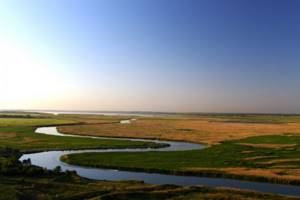
Kuma-Manych Canal, Big Stavropol Canal The idea of creating a waterway between the Sea of Azov and the Caspian Sea has a long history. In the 18th century, Academician Pallas substantiated the possibility of its implementation by connecting the seas along the valleys of the Eastern and Western Manychi rivers. In 1932, the Council of People's Commissars of the USSR decided to develop a project for a waterway connecting the Azov and Caspian seas. In 1934-1937, a working design for the connecting channel was developed. The canal route is laid along the Kuma-Manych depression. The project was partially implemented. In 1936, the Ust-Manychsky hydroelectric complex was built, and in 1941, the Veselovsky and Proletarsky hydroelectric complexes, which formed the reservoirs of the same name. The Great Patriotic War interrupted work on the creation of the Azov-Caspian waterway. In the post-war years, the construction of a canal through Kalmykia to the Caspian Sea was abandoned. It was decided to connect the Don and Volga, and in 1952 the Volga-Don shipping canal was put into operation. At the end of the 1940s, Lake Manych-Gudilo was added to the chain of reservoirs. The navigable lock waterway was 329 kilometers long. Due to the fact that Lake Manych-Gudilo was low-water and dried up almost completely in dry years (1886, 1936), canals were built to transfer water from the upper reaches of the Kuban River and the Tsimlyansk Reservoir. The Manych waterway is currently operated with very small cargo turnover of local importance. The Manych River in ancient times There are many legends about the Manych River. It is known that according to ancient Russian writings this river was called Manacha and it flowed from the Caspian Sea (in ancient times Khvalynsky, Khvalissky). It’s no longer a secret to anyone; there is an assumption that the Manych River in ancient times was a large strait connecting the Caspian and Black Seas. And the Argonauts sailed to Colchis along the strait. The existence of a connection with sea basins is evidenced by the salinity of the lakes of the Manych River. Presumably, the river ceased to exist as a strait 3000 years ago. But, despite this, for a long time the ancient tribes used Manych as a shipping artery connecting the Maeotis coast with the Caucasus. Manych trade route. Along the Manych, goods from China, Persia, Turkestan and India were transported to Tanais; merchants sailed from the Caspian Sea. Proof of this is kept in the ancient Arabic chronicle found in the Derbent fortress. In the same chronicle it is known that the Kuma and Manych rivers merged at a certain place and flowed into the Caspian Sea. The Manych River lost its connection with the sea basins as a result of a large-scale geological change. The area where it is located has risen several meters above sea level. The largest lake of the Manych-Gudilo River is 36 meters above the Caspian Sea and 24 meters above the Azov Sea. The first Phoenician traders sailed to the Caspian Sea along the Manych Strait. In the ancient book Rig-Veda there is a reminder that the first Aryans, who lived in Semirechye and Central Asia, swam across the Caspian Sea and sailed through an unknown huge strait to Ancient Greece. Finds of the Manych River. In the mid-19th century, fragments of an ancient sea vessel, presumably of Phoenician origin, made of cedar wood with copper nails, were washed up on the shores of Lake Gudila. Unfortunately, little is known about modern finds of artifacts in the Manych River basin, except for archaeological excavations of mounds and Neolithic settlements.
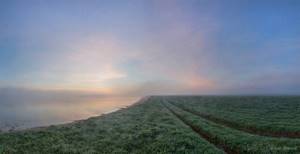

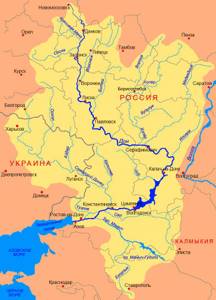
_____________________________________________________________________________________________________________________________ SOURCE OF INFORMATION AND PHOTO: Team Nomadic Surface Water Resources of the USSR: Hydrological knowledge. T. 7. Don region / ed. D. D. Mordukhai-Boltovsky. - L.: Gidrometeoizdat, 1964. - 267 p. “The Manych River (Western Manych)” - information about the object in the State Water Register. Western Manych - article from the Great Soviet Encyclopedia. Western Manych // Dictionary of modern geographical names / Rus. geogr. about. Moscow center; Under general ed. acad. V. M. Kotlyakova. Institute of Geography RAS. - Yekaterinburg: U-Factoria, 2006. “Water of Russia” - Manych “The influence of extreme natural and climatic transformations on the processes of cultural adaptation in the Paleolithic of the Caspian Basin” General map of the Russian Empire in 1745 The Manych River. Geography of the USSR. Geographical encyclopedic dictionary: geographical names - Manych River / Ed. A. F. Treshnikova. — 2nd ed., add. - M.: Soviet Encyclopedia, 1989. - P. 489. - 210,000 copies. — ISBN 5-85270-057-6. Popchikovsky V.Yu., Kuznetsov V.L. and others. Tourist sports routes. M., Profizdat, 1989, 192 p. Rivers of the North Caucasus.
| The attachment | Size |
| 52.28 KB | |
| 81.02 KB | |
| 209.55 KB | |
| 73.82 KB |
Fishing Features
The main features of fishing are:
- you can fish on your own or at specially equipped bases;
- large fish are often caught;
- even in winter there is a good bite;
- many crayfish live;
- The best fishing season is considered to be the period from late May to November.
Depending on the time of year, you can catch different types of fish.
In spring and summer it bites more actively:
- carp;
- carp;
- crucian carp;
- burbot;
- ide;
- zander;
- silver bream;
- roach.
They fish from the shore or boat, using all kinds of gear, and as bait it is better to try worms, maggots, pearl barley, corn, semolina, peas, and bloodworms.
Tip: as the sun rises, the bite for roach and burbot increases.
In autumn you can catch:
- roach;
- crucian carp;
- carp;
- ide;
- pike perch;
- perch;
- rudd;
- ram.
They are caught from the shore or boat, often with a feeder and float rods. The best gear for this season are maggots, liver, frogs, and worms.
Features of winter fishing:
- often fish are found right under the ice;
- more successful biting occurs at the beginning of December;
- A frosty sunny morning is ideal weather for fishing.
You can get:
- pike;
- crucian carp;
- roach;
- perch;
- soma.
Fishing takes place from ice, using jigs, winter fishing rods, and spinners. Worms, pieces of meat, maggots, small fish, liver, etc. are used as bait.
Important tip: the ideal rod length should be about one meter.
Winter fishing on the Veselovskoye Reservoir
Winter fishing is no less popular and interesting. At this time of year, mostly ram and perch are taken out from under the ice. Bream or crucian carp are also caught. The latter is best tracked in places with warmer water. For example, where streams flow into a reservoir. And in the first days after the ice freezes, you can catch a fish called silver bream using a regular fishing rod with a float.
It is worth remembering that in winter the Veselovskoye Reservoir does not offer pleasant weather. Strong, harsh winds arise here. Therefore, in order to avoid frostbite, some fishermen fish from tents that protect them from gusts of wind.

Blitz tips
- Remember that net fishing is strictly prohibited;
- When going fishing as a wild person, you should take a tent with you;
- In summer, especially in July, there are a lot of gadflies, you will need a mosquito net and insect repellent;
- Don't forget a hat and extra gloves;
- Book your stay at the recreation center in advance;
- Use several different gears;
- Use only strong hooks and lines;
- Experiment with baits;
- If possible, bait the fish;
- Study the route to a reservoir or base.
